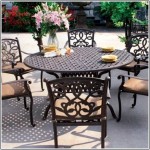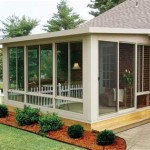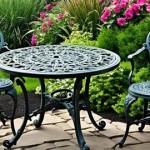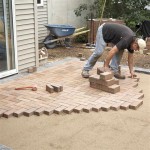Paver Stone Patio Designs: Essential Considerations for a Stunning Outdoor Oasis
Transforming your backyard into a breathtaking sanctuary requires careful planning. Paver stone patios offer a versatile and durable solution, allowing you to create an inviting and functional outdoor space. Here are some essential aspects to consider when designing your paver stone patio:
1. Material Selection
Paver stones come in a wide range of materials, including concrete, clay, and natural stone. Each material offers unique advantages and drawbacks. Concrete pavers are affordable, durable, and easy to maintain. Clay pavers are slightly more expensive but boast rich colors and a natural aesthetic. Natural stone pavers, such as granite and limestone, provide an elegant and timeless look, but they are also the most expensive option.
2. Pattern and Color
The pattern and color of your paver stones will significantly impact the overall aesthetic of your patio. Consider the architectural style of your home and the desired ambience you wish to create. Running bond, herringbone, and basketweave are popular patterns that offer visual interest. Neutral colors like beige, gray, and black are versatile and complement most outdoor designs. You can also incorporate accent colors or create intricate borders to add a touch of elegance.
3. Size and Thickness
The size and thickness of paver stones should be determined based on the intended use of your patio. For foot traffic only, thinner pavers (2-3 inches) can suffice. If your patio will be subject to heavy loads, such as vehicles or outdoor furniture, opt for thicker pavers (4-6 inches). Larger pavers create a more modern and sleek look, while smaller pavers offer a more classic and rustic aesthetic.
4. Drainage and Sloping
Proper drainage is crucial to prevent water damage and extend the longevity of your patio. Design your patio with a slight slope (1/4 to 1/2 inch per foot) away from any structures or potential water sources. Install a drainage system, such as a French drain, to channel excess water away from the patio area.
5. Edging and Restraints
Edging and restraints help keep your paver stones in place and prevent them from shifting or settling. Edging can be made of concrete, metal, or plastic, and it provides a clean and finished look to your patio. Restraints, such as polymeric sand or paver lock spacers, are placed between the paver stones to lock them together and prevent movement.
6. Maintenance and Cleaning
Regular maintenance is essential to keep your paver stone patio looking its best. Sweep or blow off loose debris as needed, and pressure wash the stones annually to remove dirt and grime. Stains can be treated with a suitable cleaner, depending on the type of paver material. For stubborn stains, consult a professional cleaning service.
By carefully considering these essential aspects, you can design a paver stone patio that perfectly complements your home and outdoor lifestyle. Whether you prefer a classic, modern, or rustic aesthetic, the versatility of paver stones allows for endless possibilities to create a stunning and inviting outdoor oasis.

Planning For A Paver Patio Ideas And Inspiration Town Country Living

450 Best Patio With Pavers Ideas Paver Design

Paver Patio Ideas S Belgard Pavers

Paver Patio Ideas The Cards We Drew

Paver Patio Ideas S Belgard Pavers

40 Patio Pavers Ideas Design For Paved Patios

Paver Patterns Patio Design Ideas Install It Direct

10 Tips And Tricks For Paver Patios

Holland Stone Patio Garden Design Backyard Seating Area Pavers

Helpful Patio Paver Design Ideas For Your Landscape








